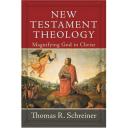I figure that you may aswell share essays online which may be of use to other students, researchers or of general interest. The following paper was produced about 5 years ago whilst at Sheffield University. It seeks to anaylse the methodology and hermeneutics of N.T Wright and Karl Barth in the light of their views of the doctrine of justification. Why study these guys? Well it was an excuse to get my teeth into their books. I have become more sympathetic of the ‘New Perspective’ since writing Chapter 3. However the cristicisms still stand to some degree.
The essay begins as follows,
Chapter 1
Christian communities have always been faced with the problem of
interpreting the Scriptures theologically. Since it is the very nature of the
Christian church to reflect upon God’s self-disclosure as witnessed by the
biblical texts, these texts have always held a prominent and normative status in
the Christian Community.
1
Doctrine has served and continues to serve as a vital function in Church life. It forms
the basis for liturgical and sacramental life as well as being instructive for the life of
individual believers and the ethical praxis of the community. Doctrine, or simply
what the Church believes and confesses to be true, stems from an engagement over
time with culture, experience, tradition and reason, but primarily with its normative
foundational document, the Bible.
As post-modern thinking has rightly pointed out, the Bible, as a collection of texts,
can be interpreted in different ways by different communities. Thus, doctrine is not
simply something that falls from the skies but is formed in the ‘hands-on experience’
of interpretation. The Christian Church enjoys some unity in doctrinal matters, such
as the almost universal acceptance of the Nicene and Apostles creed, but it is deeply
divided on some of the central features of doctrine. This is illustrated in the diversity
displayed in the doctrine of justification by faith with different views being put
forward as to what this means by traditional Catholics and Protestants, existential
theologies, and from those that construct their doctrinal affirmations in accord with
the ‘new perspective.’
This plurality in interpretation raises a number of important questions: Are some
doctrines and interpretations more valid than other? Why are the same texts
interpreted differently by different communities? Is there any Archimedean point
from which the true ‘meaning’ of a text can be revealed? Does postmodernism lead to
the death of doctrine and dogma?
The purpose of this paper is not to seek to answer these important questions. Its
limited task, functioning within the backdrop of these larger questions, is to look at
the relationship between text and the formulation of doctrine in the writings of Karl
Barth and N.T. Wright, working in particular with their differing views on the
doctrine of ‘justification by faith’. Although both scholars have found their spiritual
home within the evangelical-reformed community, they both offer an alternative to
the traditional evangelical view of justification. Wright and Barth, as we shall see,
differ considerably in the methods which they use to formulate their doctrines. Barth
uses a theological approach, whereas Wright uses a more historical and exegetical
approach.
The format of this paper will be as follows: in this chapter I will set out Barth’s and
Wright’s theologies of ‘justification by faith’ against the backdrop of mainstream
evangelical theology. In chapter two I will analyse and critique the theological
methodology of Karl Barth, followed in chapter three by an examination and critique
of N.T Wright’s methodology.








